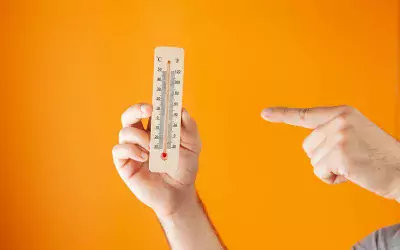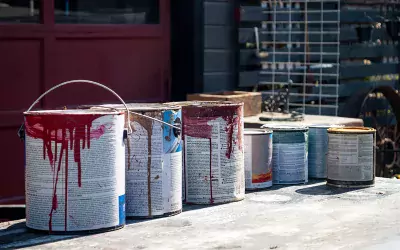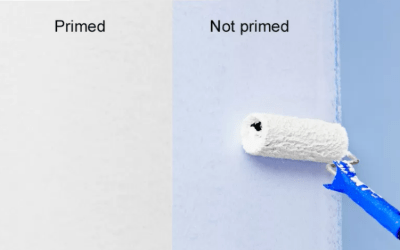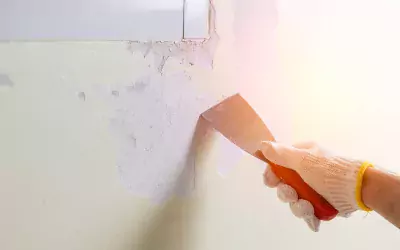House painting can be an exciting but perplexing journey, especially grappling with the intricacies like drying and curing times of different kinds of paint. Choosing interior and exterior paint colors for Florida homes is more exciting, but planning your painting project becomes more successful when understanding paint drying and curing times. Let’s unravel the mystery of how various elements like paint type, environmental conditions, and project specifics influence paint drying time.
Differentiating Between Paint Drying and Curing
Understanding the process involved in painting a wall is essential. This includes distinguishing between paint drying and curing. When we talk about paint drying, we are essentially referring to that point when the paint is dry to the touch. It means that the top layer of the paint has hardened enough so it’s not sticky or wet.
In contrast, curing is a much longer process. Paint curing is when the paint has completely hardened, and all the solvents have fully evaporated. During this phase, the paint attains its maximum durability and becomes resistant to scratches or stickiness. The curing process grants the paint the longevity it needs to maintain its finish over time.
Predicting the transition from drying to curing can be tricky as it varies depending on the paint-type, environmental conditions, and the specifics of your painting project.
Understanding The Drying Times of Different Paint Types
Different types of paints exhibit varying characteristics and take different times to dry.
Characteristics and drying times of oil-based paints
Oil-based paints are known for their strength and durability. They are great for areas like interior doors, bathrooms, and exterior house painting that need a tough, robust finish. Oil-based paints deliver a high-quality finish but do have relatively slow dry times. Each coat typically takes about 6-8 hours to dry before you can touch it. The curing process is usually faster than other paints but you’ll need to wait around 24 hours before you can apply the next coat.
Characteristics and drying times of latex-based paints
Latex-based paints are viewed as a safer alternative to oil-based paints as they use water as their solvent. Perfectly suited for painting ceilings and walls, both interior or exterior, they dry faster than oil-based paints, typically within an hour after application. However, the curing process for latex-based paint is slower, it can take around two weeks or even up to 30 days in less ideal conditions.
How Environmental Conditions Impact Drying and Curing Times
Environmental conditions play a substantial role in how long paints take to dry and cure.
The impact of humidity on paint drying times
Humidity refers to the amount of water vapor present in the atmosphere. Higher levels of humidity mean slower drying times for paint. The moisture in the air impedes the evaporation process of the solvents leading to an extended drying period. Florida’s subtropical climate produces a hot and humid season from May through October, hence drying times in Florida can be longer during this time.
How temperature affects paint drying and curing
The temperature can impact the speed at which paint dries and cures. While optimal temperatures may vary depending on the type of paint used, generally, a moderately warm environment aids in achieving ideal drying times.
The role of ventilation in paint drying
Ventilation is an important factor in paint drying. Well-ventilated rooms support quicker drying as the air circulation helps to vaporize the paint solvents more rapidly.
The Impact of Surface Type on Paint Drying and Curing Times
The type of surface that you are painting also significantly influences the time it takes for the paint to dry and cure.
How paint reacts to previously painted surfaces
Painting over a previously painted surface typically means a longer waiting time for the paint to dry. This is because the underlying layers of old paint can hinder the evaporation of the new paint solvents.
Paint drying and curing on raw surfaces
On the other hand, raw surfaces such as newly installed drywall sheets or repurposed furniture often absorb the first layer of paint quickly which in turn makes the paint dry faster than on previously painted surfaces.
Drying Time Between Coats of Paint
Why waiting before applying a second coat is crucial
Patience is key during painting jobs! It’s crucial to let paint completely dry before applying a second coat. If the first coat of paint is still wet, the second coat may not adhere properly, leading to messy results such as peeling, cracking, or blistering paint.
Recommended waiting times between coats for different paint types
Being aware of the recommended waiting times can save you from painting catastrophes. For latex paints, a gap of at least 4 hours is ideal. However, oil-based paints require a longer waiting period of around 24 hours.
Safety Measures for Occupying a Newly Painted Room
When is it safe to occupy a room painted with water-based paint?
It’s generally safe to sleep in a room that’s been freshly painted with water-based paint after a minimum of 4 hours. Of course, it’s always advisable to keep the room well-ventilated during this period.
Safety guidelines for rooms painted with oil-based paints
Oil-based paints have a higher amount of volatile organic compounds (VOCs). Because of this, it’s recommended to wait 24 hours before occupying a room painted with oil-based paint. In Florida, where temperatures can be higher, ensure rooms are well-ventilated when using oil-based paints to avoid prolonged exposure to VOCs.
Factors Influencing Drying Time of Oil-Based Paints
How environment affect oil-based paints drying times
Since oil-based paints usually have slow drying times, factors such as humidity, temperature, and ventilation may heavily affect its drying process. An optimal condition would entail a well-ventilated room with low humidity and moderately warm temperatures.
Impact of layers on oil-based paints drying times
The number of paint layers applied can also affect drying times. For example, a single layer of oil-based paint may take 6-8 hours to dry, but additional layers may extend this time as each layer needs to be fully dry before the next one is applied.
Factors Influencing Drying Time of Latex-Based Paints
How environment conditions affect latex-based paints drying times
Just like its oil-based counterpart, latex-based paint can also be significantly affected by environmental conditions such as humidity, temperature, and ventilation. Ideal conditions also include a well-ventilated low humidity, moderately warm room.
Impact of layers of paint on latex-based paints drying times
The number of layers can lengthen the drying time of latex-based paints. With every subsequent layer, it’s crucial to wait for the previous coat to dry entirely, which may be around an hour.
Tips to Expedite the Drying Process of Paint
Effective ways to improve ventilation
To aid the evaporation of paint solvents, ensure good air circulation inside the room. You can achieve this by opening windows, using fans, or even an air conditioning system.
Strategies to control room temperature and humidity
For a control over temperature and humidity, you can use a dehumidifier or an air conditioner. These devices help to maintain a consistent temperature and low humidity levels thereby contributing to quicker paint drying times.
Navigating Potential Paint Drying Issues
Preventing common problems like peeling and blistering
Peeling and blistering of paint are common issues that arise due to premature recoating or painting on damp, dirty, or hot surfaces. To avoid these issues, ensure the surface is clean, dry, and cool to the touch before painting.
Dealing with extended dry times due to adverse conditions
if you experience extended dry times due to high humidity, cold temperature or poor ventilation, try to adjust the environment as much as possible. Using a dehumidifier or heater can help speed up drying times.
In conclusion, understanding your paint type, the environment, and the surface you are painting will aid you in predicting drying and curing times. Always remember to apply coats only when the previous one is dry and take safety precautions when occupying a newly painted room. Navigating the complexities of paint drying and curing can be a challenge, especially in unique climates like Florida’s. That’s where All Star Painter comes in. Our expert team is well-versed in handling all painting needs in Tampa, Orlando, Brandon and beyond with precision and care, ensuring your project is completed efficiently and safely. Contact All Star Painters today for a hassle-free painting experience that brings your space to life!







